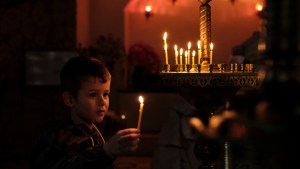Lenten Campaign 2025
This content is free of charge, as are all our articles.
Support us with a donation that is tax-deductible and enable us to continue to reach millions of readers.
When walking into the grounds of an English Catholic church, you may come across a quaint wooden or stone structure at the entrance to the churchyard: the lychgate.
In fact, you might even have seen one in a British rom-com, serving as a beautiful backdrop for when a couple leaves the church, walking out of the gate hand-in-hand after copious amounts of drama.
However, while it might seem like a charming historical relic, its significance carries both practical and symbolic meaning, as Fr. Lawrence Lew recently shared on X.
The term lychgate comes from the Old English words lych, meaning “corpse,” and gate, meaning “entrance.” True to its name, the lychgate historically marked the place where the deceased was received before a funeral Mass or burial.
A pause for prayer
In previous centuries, the body of the departed would be laid on a bier — a moveable frame to support a coffin — beneath the lychgate, and prayers would be said before the procession entered the church. It was a place of solemn transition, where the community paused to honor the soul of the deceased and prepare for the sacred rites within.
Architecturally, lychgates are as varied as the churches they serve. Most are simple structures, often made of timber with a pitched roof, though some are crafted from stone or adorned with intricate carvings. Beyond their somber origins, lychgates often serve as a welcoming entryway, a symbolic bridge between the secular and the sacred.
Today, the lychgate’s practical role may have faded, but its presence continues to evoke a sense of tradition and reverence. Many churchgoers and visitors admire them as charming pieces of history, offering a quiet moment for reflection as they pass through.
Next time you encounter a lychgate, take a moment to appreciate its blend of functionality and faith. It’s a lovely reminder that even the smallest details of a Catholic churchyard hold rich stories of devotion, community, and care for the departed.



